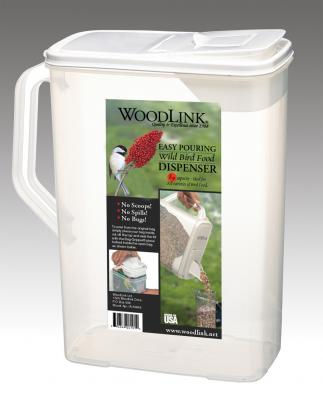
Imagine going to a gourmet restaurant and having a delicious meal of salmon with mashed potatoes and asparagus on the side. But when you walk by the kitchen, you see the fish just sitting on the counter, the asparagus on the floor with critters running through it and the potatoes sprouting. You’d probably be more than outraged at the poor kitchen conditions.
Even though birds aren’t as aware as we are about cooking conditions, you should never give them birdseed that’s been improperly stored or has any bacteria on it. The consequences can be deadly if you do.
The Minnesota Department of Natural Resources wrote this week about how moldy birdseed could cause a fatal avian disease called aspergillosis. It’s not always easy to identify when your seeds are bad, but by properly storing them, you can significantly reduce the chance of contamination. Here’s how.
Buy in moderation
One way to really help with your birdseed storage is to buy birdseed in moderation. If you can, avoid buying huge quantities that will last for a long time because the longer you have it, the more chance it has at getting contaminated. Unfortunately, that’s not always possible.
Use airtight containers
 Large airtight containers are by far the best way to store your birdseed because they can keep the moisture out. Make sure the container is made out of durable material to prevent cracks or spillage. Strong plastic bins with a lid are good options.
Large airtight containers are by far the best way to store your birdseed because they can keep the moisture out. Make sure the container is made out of durable material to prevent cracks or spillage. Strong plastic bins with a lid are good options.
Store in a dry, cool location
Water is an enemy of birdseed. Any exposure for any amount of time could lead to mold, which can be fatal to the birds eating the seed. You should put in a place that’s convenient for refilling your feeders, but it should also be sheltered, like in a garage or a backroom that connects to your yard.
Thoroughly clean the container
Once you’ve used up all or most of the seed, you should give the container a good cleaning. Completely remove everything from the container and wash it out with warm water and soap. If mold or bad seed is in there, you don’t want it to contaminate new seed you might be putting in. Make sure to let the container completely dry before putting any seed back in it.
Check for bad seed
Finally, you should always check for bad seed when refilling feeders. You can tell bad seed by its smell (it will often give off an unpleasant musty smell if bad) or by the presence of moisture (this will manifest itself through clumping and dampness). Also, make sure no critters—insects or mice—have gotten into the seed.


